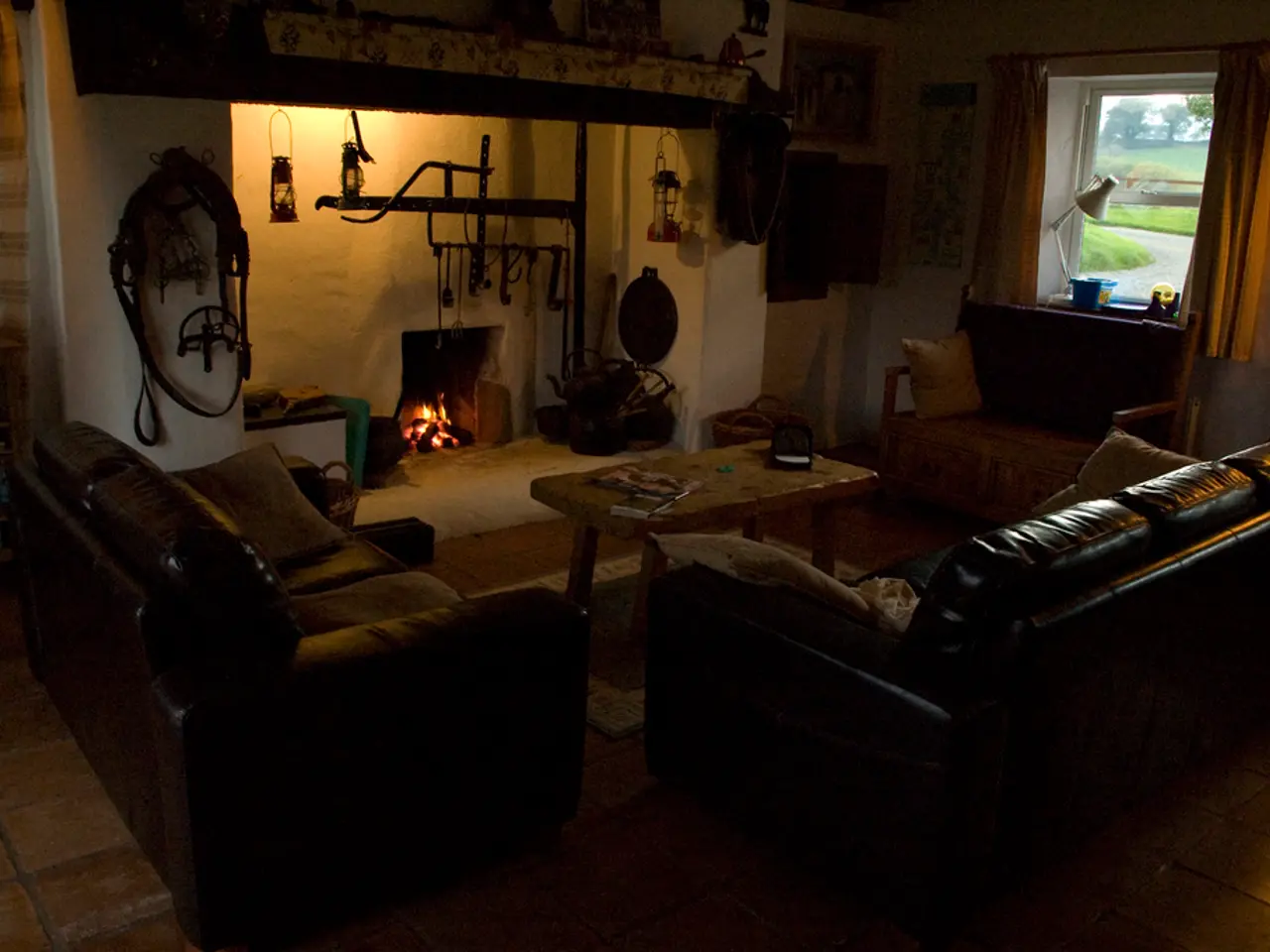Enhance Indoor Air Circulation Through Curtain, Furniture, and Living Space Alterations
In today's modern living spaces, the way air moves through a home can significantly impact both comfort and health. By making thoughtful interior design choices, homeowners can improve home airflow and indoor air quality, creating a healthier and more comfortable living environment.
One key aspect to consider is vent placement and type. Choosing between ceiling vents and floor vents affects airflow direction and comfort. Floor vents work better in colder climates as they allow warm air to rise, while ceiling vents are more effective in warm climates for efficiently delivering cool air downward. This design choice influences both airflow patterns and HVAC efficiency, thereby affecting indoor air quality and overall comfort.
Reducing clutter and optimizing layout is another important factor. Simplifying interior layouts by reducing clutter improves airflow circulation inside rooms. Clearer spaces facilitate better air movement, which enhances the distribution of fresh air and the removal of stale air, contributing to healthier indoor air.
Strategic openings and natural ventilation are also crucial. Designing interior spaces with strategically placed openings (windows, doors, vents) improves natural ventilation. This approach lessens dependence on mechanical cooling and ventilation systems, thereby improving indoor air quality by increasing fresh air exchange and reducing pollutants and carbon emissions.
Maximizing natural light is another aspect that can indirectly improve air quality. Introducing more natural light reduces the need for artificial lighting and can improve air quality by reducing heat generated by electrical sources, which can affect humidity and air quality. Moreover, natural light supports mental well-being and creates a more inviting atmosphere.
Ductwork design is another area where careful planning can make a big difference. Thoughtful duct planning during renovation or design stages optimizes airflow, prevents energy loss, reduces noise, and ensures even air distribution, all of which enhance HVAC system performance and indoor air quality.
Making small adjustments to interior design, such as repositioning furniture or choosing lighter curtains, can lead to increased comfort and a healthier home. For instance, lightweight, breathable curtains can help keep room temperatures up to 3°C lower than heavier drapes.
Carpets can act as a reservoir for allergens, particularly in humid environments. Choosing breathable flooring alternatives like oak, bamboo, or cork can help promote cleaner air and better circulation throughout the home. Low-pile rugs allow for increased airflow and are easier to clean, reducing allergens and dust.
Creating open space around vents, radiators, and windows promotes greater air dispersion, increases circulation to upper levels, and reduces the demand on your system, saving both energy and money. Arranging major pieces of furniture away from walls (6-12 inches) allows for improved airflow behind and around them.
It's important to note that poor ventilation can lead to hazardous living conditions, such as respiratory issues, mold development, and fatigue or headaches. On the other hand, good indoor air quality has been linked to improved health and cognitive performance. A well-ventilated house can lower humidity, reduce allergens and dust, and regulate temperature.
In conclusion, interior design changes that optimize vent placement, increase natural light, reduce clutter, plan strategic ventilation openings, and improve ductwork design contribute to better home airflow and improved indoor air quality. This holistic approach supports a healthier, more comfortable living environment. The EPA has highlighted the concern of indoor air pollutants, making it essential for homeowners to consider these factors when designing or renovating their living spaces.
- Incorporating science and health-and-wellness aspects into household management, strategic choices in interior design can impact the quality of air within modern living spaces, promoting a healthier lifestyle.
- Proper interior design, encompassing home-and-garden elements such as natural light and ventilation openings, can improve airflow and lead to cleaner air, enhancing overall living conditions.
- By making thoughtful lifestyle decisions, such as choosing breathable flooring and positioning furniture to optimize airflow, homeowners can promote better air circulation, thereby fostering a cleaner, healthier living environment, which is further supported by research in interior design and lifestyle management.




